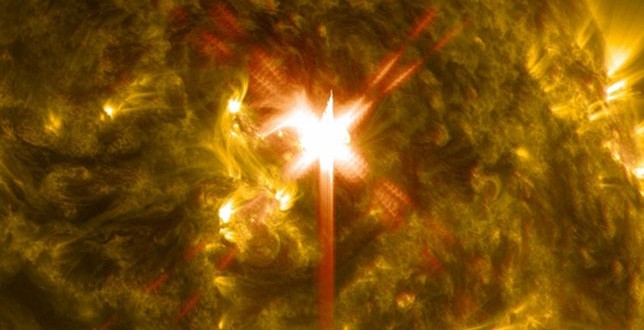On Saturday, the sun erupted with an X-class solar flare, blasting Earth with powerful electromagnetic radiation. Although we couldn’t directly feel its effects on the ground, the impact of this event was measured as a dramatic radio blackout for several minutes, highlighting the fact that the sun isn’t quite done with solar maximum yet.
According to the National Weather Service’s Space Weather Prediction Center, the X1 solar flare could affect satellites and cause GPS errors, PC World reported.
They also said that electrical power lines may be hit by extra current, and high frequency communications could be blocked when the radiation hits Earth.
Extreme ultraviolet light streams out of an X-class solar flare as seen in this image captured on March 29, 2014, by NASA’s Solar Dynamics Observatory. This image blends two wavelengths of light: 304 and 171 Angstroms, which help scientists observe the lower levels of the sun’s atmosphere.
This flare is classified as an X.1-class flare. X-class denotes the most intense flares, while the number provides more information about its strength. An X2 is twice as intense as an X1, an X3 is three times as intense, etc.
Agencies/Canadajournal
 Canada Journal – News of the World Articles and videos to bring you the biggest Canadian news stories from across the country every day
Canada Journal – News of the World Articles and videos to bring you the biggest Canadian news stories from across the country every day



